
Do you have a question about the Siemens SIMATIC PCS 7 CPU 410-5H and is the answer not in the manual?
| Product type designation | CPU 410-5H |
|---|---|
| Integrated PROFIBUS DP Interface | Yes |
| Integrated PROFINET Interface | Yes |
| Number of ports of integrated switch | 2 |
| Number of DP masters | 1 |
| Number of PROFINET IO devices max. | 256 |
| Number of connections for PROFINET IO RT | 256 |
| Number of Clock Memories | 8 |
| Number of Blocks (Total) | 16384 |
| Number of Routing Connections | 64 |
| Number of PG/OP Connections | 32 |
| Number of S7 Basic Communication Connections | 32 |
| Cycle time monitoring | Yes |
| Fault Tolerance | Yes |
| Supply voltage | 24 V DC |
| Engineering with | SIMATIC PCS 7 |
| Communication Ports | 2x PROFINET, 1x PROFIBUS DP |
| PROFIBUS DP Data Transfer Rate | 9.6 kbps to 12 Mbps |
| PROFINET Data Transfer Rate | 10/100 Mbps |
| Number of Timers/Counters | 2048 |
| Redundancy Mode | Yes, Hot Standby |
| Ambient Temperature (Operation) | 0 to 60 °C |
Introduction to the manual, its purpose, basic knowledge, scope, and approvals.
Details on Siemens' industrial security functions and recommendations for secure operation.
Overview of user documentation for the S7-400 automation system and related components.
Describes PCS 7 and the CPU 410-5H Process Automation's role in Totally Integrated Automation.
Explains various applications and configurations for the S7-400H system.
Details the hardware and components for a CPU 410-5H in stand-alone configuration.
Describes the hardware components and configuration for a fault-tolerant S7-400H system.
Outlines essential rules for assembling fault-tolerant stations and arranging modules.
Details the use of input/output modules with the CPU 410-5H in various devices.
Explains different configuration variants for input/output modules in fault-tolerant systems.
Describes the tools used for configuring the CPU 410-5H and fault-tolerant systems.
Explains the core components and views within a PCS 7 project.
Details the process of scaling and licensing based on process objects (PO) and system expansion cards.
Arrangement of control and display elements, including LEDs and buttons, on the CPU 410-5H.
Overview of hardware and operating system monitoring functions and error reactions.
Explains the meaning of RUN, STOP, MSTR, RACK0, RACK1, LINK, RX/TX, REDF, IFM LEDs.
Describes the PROFIBUS DP interface, connectable devices, connectors, and redundant operation.
Details the PROFINET IO interfaces, IP address assignment, and connectable devices.
Describes default parameter values, parameter blocks, assignment tools, and further settings for the CPU.
Provides information on stand-alone operation, definition, requirements, and configuration.
Explains ensuring functional safety, SIMATIC Safety Integrated systems, and fail-safe CPU functions.
Discusses operating objectives, reasons, and types of redundant automation systems.
Explains I/O installation types, addressing, and further I/O expansion for fault-tolerant systems.
Details the concept of single-channel switched I/O and its configuration at PROFIBUS DP and PROFINET IO interfaces.
Explains system redundancy, media redundancy, and their implementation in PROFINET IO.
Covers signal modules for redundancy, their use, and specific conditions.
Details the startup, address ranges, and output/input data length for PROFIBUS DP master operation.
Specifies the address ranges for DP interfaces and I/O in the process image.
Explains diagnostics using LED displays and diagnostic addresses for PROFIBUS DP masters.
Introduces PROFINET IO as an Industrial Ethernet standard for automation.
Illustrates PROFINET IO functions, system redundancy views, and commissioning procedures.
Describes how to replace IO devices without needing a removable medium or programming device.
Details the CPU operating states: RUN, STOP, STARTUP, HOLD, LINK-UP, ERROR-SEARCH, DEFECTIVE.
Explains system states resulting from concurrent CPU operating states in fault-tolerant systems.
Describes the self-test process, response to errors, and how hardware faults are handled.
Explains the memory reset process in the CPU, including data retention and LED behavior.
Details the effects of link-up and update operations on program execution and communication functions.
Lists PG commands available for initiating link-up and update operations based on CPU conditions.
Describes monitoring times relevant for updates, including cycle time, communication delay, and inhibit time.
Discusses requirement for input signals during update and communication links during updates.
Explains how to define protection levels for projects to prevent unauthorized access to CPU programs.
Details the S7-Block Privacy add-on for protecting functions and blocks against unauthorized access.
Provides a procedure for resetting the CPU to factory settings, including LED patterns and property changes.
Describes the procedure for performing a reset during operation and in stand-alone mode with restart.
Explains the basic procedure and requirements for updating the CPU firmware.
Details procedures for automatic and progressive firmware updates in RUN mode for fault-tolerant systems.
Explains how to read and save diagnostic information from the CPU for customer support.
Describes how the CPU responds to fault detection, including automatic reboot and saving service data.
Explains time synchronization capabilities via PROFIBUS DP and PROFINET IO interfaces using NTP and SIMATIC methods.
Describes the support for type updates with interface changes in RUN for the S7-410 automation system.
Details options for making system modifications during operation without interrupting the running program.
Explains how hardware modifications (adding/removing modules) can be made in redundant system state.
Provides a step-by-step procedure for adding hardware components to a fault-tolerant system in PCS 7.
Outlines the steps for removing hardware components from a fault-tolerant system in PCS 7.
Explains how to edit certain CPU parameters, including startup, memory, and security settings.
Describes how to reconfigure module parameters during operation using a step-by-step procedure.
Covers failure and replacement of central components like CPUs, power supply modules, and I/O modules.
Details the replacement of PROFIBUS DP master, slaves, cables, and I/O modules in distributed stations.
Covers failure and replacement of PROFINET IO devices and cables.
Explains the function and types of synchronization modules used for linking redundant CPUs.
Provides instructions and points to observe for installing fiber-optic cables for synchronization links.
Guides on selecting suitable fiber-optic cables based on conditions like length, installation environment, and specifications.
Describes the use, variants, and scaling options of the system expansion card (SEC) for the CPU.
Provides detailed technical specifications for the CPU 410-5H, covering general information, design, supply voltage, memory, and processing times.
Offers supplementary information on PROFIBUS DP, including monitoring, bus topology, and module addition.
Details how to read and evaluate diagnostics data for the CPU 410-5H as a PROFIBUS DP master.
Explains system status lists for PROFINET IO and compares them with PROFIBUS DP.
Provides rules for arranging fault-tolerant station components and configuring hardware.
Describes how SIMATIC Manager visualizes and edits fault-tolerant stations and communication functions.
Provides an overview of communication services like PG, OP, S7, PROFIBUS DP, PROFINET IO, and open IE communication.
Introduces fundamentals and concepts of fault-tolerant communication, including redundant systems and nodes.
Discusses usable networks like Industrial Ethernet and PROFIBUS for communication with fault-tolerant systems.
Explains communication with standard systems and fault-tolerant S7 connections.
Details communication combinations and requirements for fault-tolerant S7 connections.
Covers consistency of communication blocks and functions, and rules for reading/writing data.
Describes the sequence of link-up and update operations, including types and procedures.
Explains user program execution, specific blocks for S7-400H, and their influence on redundancy functions.
Presents alternative methods for connecting redundant I/Os at the user level.
Details factors influencing cycle time, calculation methods, and response times.
Provides runtime values for function blocks (FCs) and function block libraries (FBs) used with redundant I/Os.
Introduces characteristic values of redundant systems, including reliability, MTBF, and MDT.
Compares MTBF values for different system configurations, including redundant CPUs and distributed I/Os.
Lists function modules (FM) and communication processors (CP) approved for central use in redundant configurations.
Lists function modules (FM) and communication processors (CP) usable for distributed switched use.
Explains the use of MTA terminal modules for connecting field devices to I/O modules.
Provides tables and information on interconnecting digital and analog output modules using diodes.
Shows the connection of two redundant encoders to SM 321; DI 16 x DC 24 V modules.
Illustrates connecting redundant encoder pairs to SM 321; DI 32 x DC 24 V modules.
Shows the connection of redundant encoders to SM 321; DI 16 x AC 120/230 V modules.
Details the connection of redundant encoders to SM 321; DI 8 x AC 120/230 V modules.
Illustrates connecting redundant encoder pairs to SM 321; DI 16 x DC 24V modules.
Shows the connection of redundant encoder pairs to SM 321; DI 16 x DC 24V modules.
Details the connection of an actuator to redundant SM 326; DO 10 x DC 24V/2A modules.
Illustrates connecting redundant encoders to SM 326; DI 8 x NAMUR modules.
Shows the connection of an encoder to redundant SM 326; DI 24 x DC 24 V modules.
Details the connection of a redundant encoder to SM 421; DI 32 x UC 120 V modules.
Illustrates connecting redundant encoder pairs to SM 421; DI 16 x DC 24 V modules.
Shows the connection of redundant encoders to SM 421; DI 32 x DC 24 V modules.
Details the connection of redundant encoders to SM 421; DI 32 x DC 24 V modules.
Illustrates connecting an actuator to redundant SM 322; DO 8 x DC 24 V modules.
Shows the connection of an actuator to redundant SM 322; DO 32 x DC 24 V modules.
Details the connection of an actuator to SM 322; DO 8 x AC 230 V/2 A modules.
Illustrates connecting an actuator to redundant SM 322; DO 16 x DC 24 V/10 mA [EEx ib] modules.
Shows the connection of an actuator to redundant SM 322; DO 4 x DC 15 V/20 mA [EEx ib] modules.
Details the connection of an actuator to redundant SM 322; DO 8 x DC 24 V/0.5 A modules.
Illustrates connecting an actuator to redundant SM 322; DO 16 x DC 24 V/0.5 A modules.
Shows the connection of actuators to redundant SM 332; AO 8 x 12 Bit modules.
Details the connection of actuators to redundant SM 332; AO 4 x 0/4...20 mA [EEx ib] modules.
Illustrates connecting an actuator to SM 422; DO 16 x AC 120/230 V/2 A modules.
Shows the connection of an actuator to redundant SM 422; DO 32 x DC 24 V/0.5 A modules.
Details the connection of a transmitter to redundant SM 331; AI 4 x 15 Bit [EEx ib] modules.
Illustrates the connection of a transmitter to SM 331; AI 8 x 12 Bit modules.
Shows the connection of a transmitter to redundant SM 331; AI 8 x 16 Bit modules.
Details the connection of a transmitter to redundant SM 331; AI 8 x 16 Bit modules.
Illustrates the connection of a thermocouple to redundant SM 331 AI 6xTC 16Bit iso modules.
Shows the connection of a 4-wire transmitter to redundant SM 331; AI 8 x 0/4...20mA HART modules.
Details the connection of actuators to redundant SM 332; AO 8 x 12 Bit modules.
Illustrates the connection of actuators to redundant SM 332; AO 8 x 0/4...20mA HART modules.
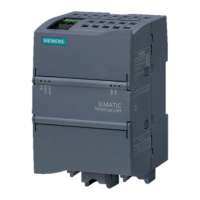
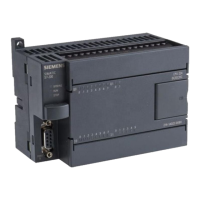


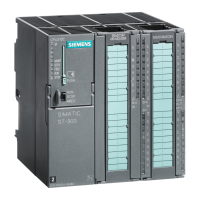

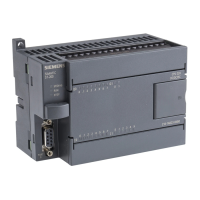

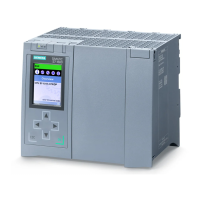
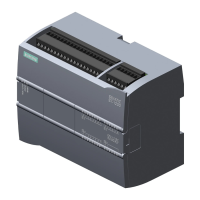

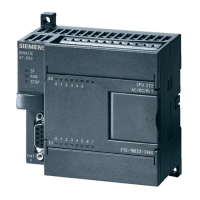
